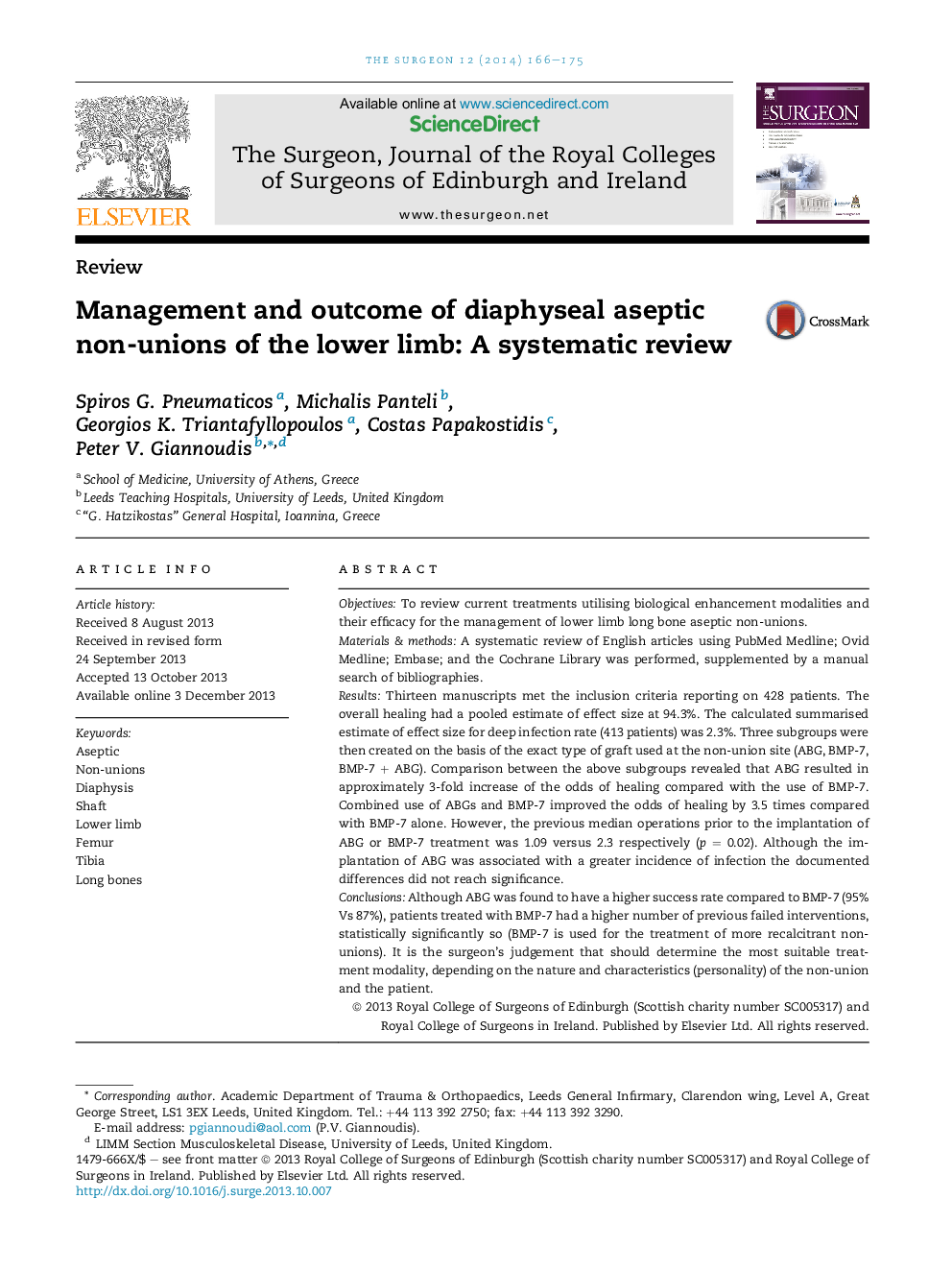| Article ID | Journal | Published Year | Pages | File Type |
|---|---|---|---|---|
| 3178523 | The Surgeon | 2014 | 10 Pages |
ObjectivesTo review current treatments utilising biological enhancement modalities and their efficacy for the management of lower limb long bone aseptic non-unions.Materials & methodsA systematic review of English articles using PubMed Medline; Ovid Medline; Embase; and the Cochrane Library was performed, supplemented by a manual search of bibliographies.ResultsThirteen manuscripts met the inclusion criteria reporting on 428 patients. The overall healing had a pooled estimate of effect size at 94.3%. The calculated summarised estimate of effect size for deep infection rate (413 patients) was 2.3%. Three subgroups were then created on the basis of the exact type of graft used at the non-union site (ABG, BMP-7, BMP-7 + ABG). Comparison between the above subgroups revealed that ABG resulted in approximately 3-fold increase of the odds of healing compared with the use of BMP-7. Combined use of ABGs and BMP-7 improved the odds of healing by 3.5 times compared with BMP-7 alone. However, the previous median operations prior to the implantation of ABG or BMP-7 treatment was 1.09 versus 2.3 respectively (p = 0.02). Although the implantation of ABG was associated with a greater incidence of infection the documented differences did not reach significance.ConclusionsAlthough ABG was found to have a higher success rate compared to BMP-7 (95% Vs 87%), patients treated with BMP-7 had a higher number of previous failed interventions, statistically significantly so (BMP-7 is used for the treatment of more recalcitrant non-unions). It is the surgeon's judgement that should determine the most suitable treatment modality, depending on the nature and characteristics (personality) of the non-union and the patient.
